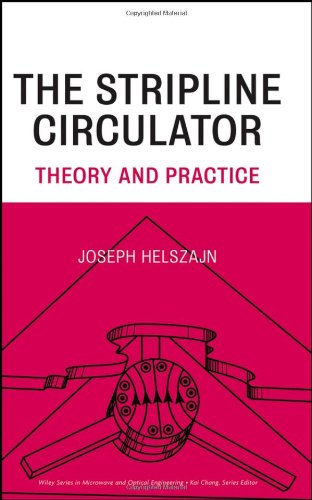

Most ebook files are in PDF format, so you can easily read them using various software such as Foxit Reader or directly on the Google Chrome browser.
Some ebook files are released by publishers in other formats such as .awz, .mobi, .epub, .fb2, etc. You may need to install specific software to read these formats on mobile/PC, such as Calibre.
Please read the tutorial at this link: https://ebookbell.com/faq
We offer FREE conversion to the popular formats you request; however, this may take some time. Therefore, right after payment, please email us, and we will try to provide the service as quickly as possible.
For some exceptional file formats or broken links (if any), please refrain from opening any disputes. Instead, email us first, and we will try to assist within a maximum of 6 hours.
EbookBell Team

4.1
20 reviewsThe stripline junction circulator is a unique three-port non-reciprocal microwave junction used to connect a single antenna to both a transmitter and a receiver. Its operation relies on the interaction between an electron spin in a suitably magnetized insulator with an alternating radio frequency magnetic field. In its simplest form, it consists of a microwave planar gyromagnetic resonator symmetrically coupled by three transmission lines.
This book explores the magnetic interaction involved in the stripline circulator's operation, the nature of the microwave resonator shape, and the network problem that arises in coupling the microwave resonator to the microwave circuit. The stripline circulator is an important device met across a wide range of industries, including wireless, military, radar, and satellite communications. The book's design tables are a unique feature, offering valuable design support.
Written by an international authority on non-reciprocal microwave circuits and devices, the book is organized into logical blocks of chapters that focus on specific effects and circuit aspects of the stripline circulator. Among the highlights of coverage are:
Spatial shape demagnetizing factors of magnetic insulators
Standing wave solutions of wye gyromagnetic planar resonators
Lumped element circulators
Negative permeability tracking and semi-tracking circulators
Four-port single-junction circulators
Fabrication of very weakly and weakly magnetized microstrip circulators
The final chapter explores important and continuing discrepancies between theoretical models and actual practice. For designers building circulators, isolators, and phase shifters; researchers working on the limitation of ferrite devices; and graduate students intending to work in the field, Dr. Helszajn's insights and perspectives are invaluable.